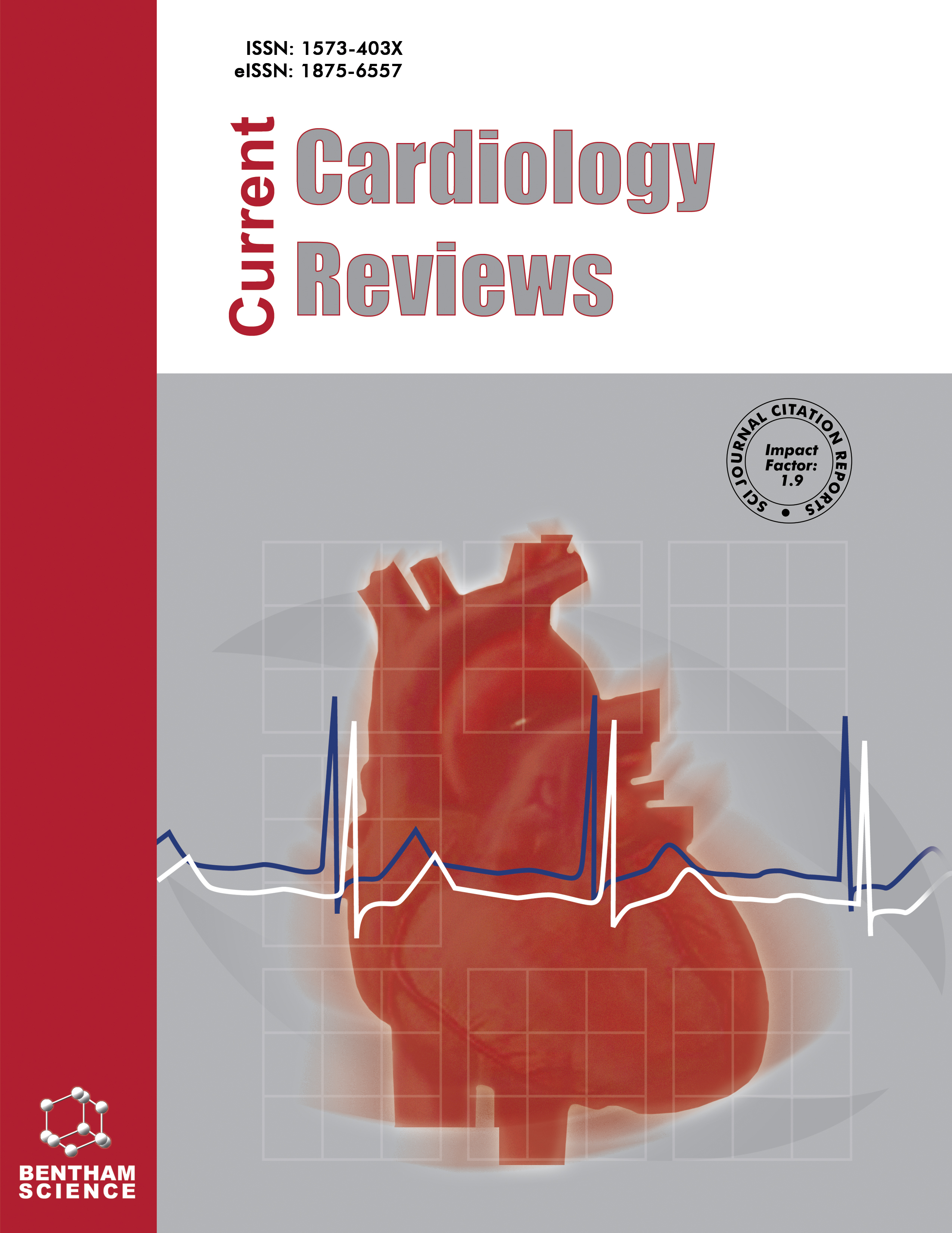- Home
- A-Z Publications
- Current Cardiology Reviews
- Previous Issues
- Volume 8, Issue 1, 2012
Current Cardiology Reviews - Volume 8, Issue 1, 2012
Volume 8, Issue 1, 2012
-
-
Cyanotic Congenital Heart Disease The Coronary Arterial Circulation
More LessBackground: The coronary circulation in cyanotic congenital heart disease (CCHD) includes the extramural coronary arteries, basal coronary blood flow, flow reserve, the coronary microcirculation, and coronary atherogenesis. Methods: Coronary arteriograms were analyzed in 59 adults with CCHD. Dilated extramural coronaries were examined histologically in six patients. Basal coronary blood flow was determined with N-13 p Read More
-
-
-
Synergy Between Direct Coronary Stenting Technique and Use of the Novel Thin Strut Cobalt Chromium Skylor™ Stent: the Mace in Follow Up Patients Treated with Skylor Stent [MILES Study]
More LessBACKGROUND: Despite significant improvements in stent platform, currently available bare-metal stents (BMS) are still associated with restenosis. Thin-strut design cobalt-chromium alloys hold the promise of improving results of BMS, especially when implanted with direct technique. We performed an observational study to appraise outcomes of the novel Skylor™ stent, stratifying outcomes according to stenting techniqu Read More
-
-
-
On the Analysis of Fingertip Photoplethysmogram Signals
More LessPhotoplethysmography (PPG) is used to estimate the skin blood flow using infrared light. Researchers from different domains of science have become increasingly interested in PPG because of its advantages as non-invasive, inexpensive, and convenient diagnostic tool. Traditionally, it measures the oxygen saturation, blood pressure, cardiac output, and for assessing autonomic functions. Moreover, PPG is a promising t Read More
-
-
-
Myocardial Revascularization for the Elderly: Current Options, Role of Off-pump Coronary Artery Bypass Grafting and Outcomes
More LessThe increase in life expectancy has confronted cardiac surgery with a rapidly growing population of elderly patients requiring surgical myocardial revascularization. Recent advances in surgical and anesthetic techniques and improvements in postoperative care have made coronary artery bypass grafting an established therapeutic option for the treatment of coronary artery disease in this group of patients. However, conve Read More
-
-
-
Evidence-Based Percutaneous Closure of the Left Atrial Appendage in Patients with Atrial Fibrillation
More LessAtrial fibrillation is the most common cardiac arrhythmia, and its prevalence is increasing. Cardioembolic stroke, most of the times secondary to thrombus formation in the left atrial appendage, is its most feared and life threatening consequence. Oral anticoagulation with vitamin-K-antagonists is currently the most used prophylaxis for stroke in patients with atrial fibrillation; unfortunately, its benefits are limited by a Read More
-
-
-
Tissue Doppler Imaging in Coronary Artery Diseases and Heart Failure
More LessRecent studies have explored the prognostic role of TDI-derived parameters in major cardiac diseases, such as coronary artery disease (CAD) and heart failure (HF). In these conditions, myocardial mitral annular systolic (S’) and early diastolic (E’) velocities have been shown to predict mortality or cardiovascular events. In heart failure non invasive assessment of LV diastolic pressure by transmitral to mitral annular early diastolic Read More
-
-
-
Acute Cardioembolic Cerebral Infarction: Answers to Clinical Questions
More LessAuthors: Adria Arboix and Josefina AlioCardioembolic cerebral infarction (CI) is the most severe subtype of ischaemic stroke but some clinical aspects of this condition are still unclear. This article provides the reader with an overview and up-date of relevant aspects related to clinical features, specific cardiac disorders and prognosis of CI. CI accounts for 14-30% of ischemic strokes; patients with CI are prone to early and long-term stroke recurrence, althou Read More
-
-
-
Circulatory Syndrome: An Evolution of the Metabolic Syndrome Concept!
More LessAuthors: Ali Reza Khoshdel, Shane L.Carney and Alastair GilliesThe metabolic syndrome has been a useful, though controversial construct in clinical practice as well as a valuable model in order to understand the interactions of diverse cardiovascular risk factors. However the increasing importance of the circulatory system in particular the endothelium, in both connecting and controlling organ function has underlined the limitations of the metabolic syndrome definition. The proposed “Cir Read More
-
-
-
Beta Blocker Use After Acute Myocardial Infarction in the Patient with Normal Systolic Function: When is it “Ok” to Discontinue?
More LessAuthors: Anna Kezerashvili, Kevin Marzo and Joshua De LeonBeta-Blockers [BB] have been used extensively in the last 40 years after acute myocardial infarction [AMI] as part of therapy and in secondary prevention. The evidence for “routine” therapy with beta-blocker use post AMI rests largely on results of trials conducted over 25 years ago. However, there remains no clear recommendation regarding the appropriate duration of treatment with BBs in post AMI patients with n Read More
-
Volumes & issues
-
Volume 21 (2025)
-
Volume 20 (2024)
-
Volume 19 (2023)
-
Volume 18 (2022)
-
Volume 17 (2021)
-
Volume 16 (2020)
-
Volume 15 (2019)
-
Volume 14 (2018)
-
Volume 13 (2017)
-
Volume 12 (2016)
-
Volume 11 (2015)
-
Volume 10 (2014)
-
Volume 9 (2013)
-
Volume 8 (2012)
-
Volume 7 (2011)
-
Volume 6 (2010)
-
Volume 5 (2009)
-
Volume 4 (2008)
-
Volume 3 (2007)
-
Volume 2 (2006)
-
Volume 1 (2005)
Most Read This Month
Article
content/journals/ccr
Journal
10
5
false
en


